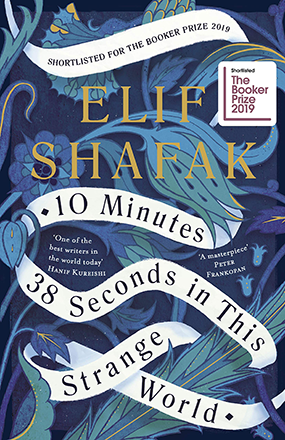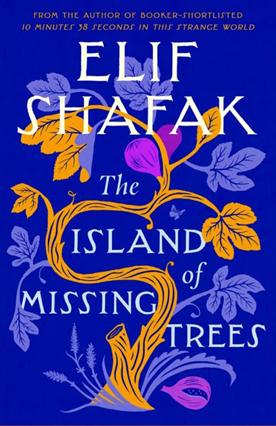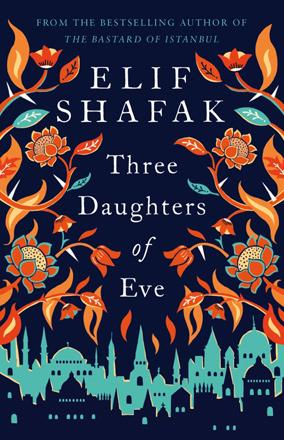You are here
‘The world as an enormous building site’
By Sally Bland - Nov 13,2016 - Last updated at Nov 13,2016
The Architect’s Apprentice
Elif Shafak
New York: Penguin Books, 2014
Pp. 424
Love is at the heart of this novel, though it is often most apparent when thwarted. One of the few great loves that does persist throughout the story is that of Jahan for Chota, the extraordinary white elephant that he brings into Sultan Suleiman’s palace menagerie in Istanbul. Another is Jahan’s love for building design which he learns while apprenticed to Sinan, the Sultan’s chief Architect — one of several real historical figures around which Elif Shafak weaves her novel.
Another theme in “The Architect’s Apprentice” is the chasm between appearances and truth, and the possibilities this offers for reinventing one’s self if one is clever and not above engaging in deception. For Jahan is neither an elephant trainer nor Indian as he pretends. Fleeing an unhappy home at the age of 12, he stows away on a ship bearing Chota as a gift from an Indian Shah to the Ottoman Sultan. Through several twists of fate and some clever lies on his part, he replaces Chota’s original caretaker and works hard to adapt to his new role. Amidst the labyrinths, both physical and psychological, of the Ottoman court, Jahan is far from the only one pretending to be what he is not. Yet despite his savviness in adjusting to shifting realities, Jahan is at heart naïve and prone to trust others. These qualities, plus his forbidden love for the Sultan’s daughter, make him vulnerable to the intrigues which proliferate in the palace.
At first, Jahan dreams of acquiring riches, marrying the perfect women and returning home, but after he is chosen as one of the four apprentices to Sinan, he throws himself wholeheartedly into his new vocation, without abandoning Chota. The elephant joins construction teams, and is also employed in the imperial wars, to Jahan’s great distress.
The novel follows Jahan’s life through the reign of three sultans and a succession of grand viziers, revealing both the beauty and horrors of the 16th century Ottoman Empire, where the welfare of the many is sacrificed to ensure a life of luxury for the few. Shafak’s extravagant descriptions evoke the opulent jewels, furnishings, costumes, rituals and cuisine of the court, and a whole host of larger-than-life characters that exemplify the multiple cultural, ethnic and religious communities that make Istanbul a truly cosmopolitan hub. “A honeysuckle of a city, it drew from near and far people of every kind — bustling, seeking, yearning”. (p. 231)
But lurking beneath the surface of diversity are the machinations of power seekers who stand to gain by setting the majority against various minorities. Just as ominous are the superstitious, who view human knowledge and creativity as contrary to religious belief, and tantamount to inviting catastrophe.
Most impressive are the descriptions of how the architectural wonders of Istanbul were built and renovated — from the Suleimaniye Mosque to the Hagia Sophia to the extensive water system. Shafak takes the reader to the construction sites to observe the huge number of craftsmen and laborers involved, the quality of materials and tools used, how designs are readjusted and mistakes corrected, and the human reactions elicited by the monuments.
Upon the completion of the Suleimaniye Mosque, “Jahan could think only of the world as an enormous building site. While the master and apprentices had been raising this mosque, the universe had been constructing their fate. Never before had he thought of God as an architect. Christians, Jews, Muslims, Zoroastrians and people of myriad faiths and creeds lived under the same invisible dome”. (p. 145)
With Shafak’s masterful descriptions, Istanbul assumes the status of a character in its own right, but it is also the epicentre of the novel’s driving contradiction: The spectacular buildings to which the gentle, wise Sinan devotes his life, with Jahan following his every footstep, are funded by successive imperial wars which entail massive destruction, plunder, killing and enslavement. By the end of the story, one understands that the many intrigues and plots against Sinan and Jahan can be traced to the resentment and rage generated by the violence and inequality of empire.
“The Architect’s Apprentice” displays Shafak’s expansive imagination that extends beyond re-envisioning a long-past historical period, to explore secret crevices in the human psyche. She is Turkish, but writes in English, using it in an innovative way that makes her part of an international trend that is re-inventing the language. As in her other books, she tells a compelling story that highlights the importance of love and tolerance.
Related Articles
10 Minutes 38 Seconds in This Strange WorldElif ShafakLondon: Viking/Penguin Random House: 2019Pp.
The Island of Missing TreesElif ShafakUK: Viking/Penguin Random House, 2021Pp.
Three Daughters of EveElif ShafakUK: Viking/Penguin Random House, 2016Pp.


















